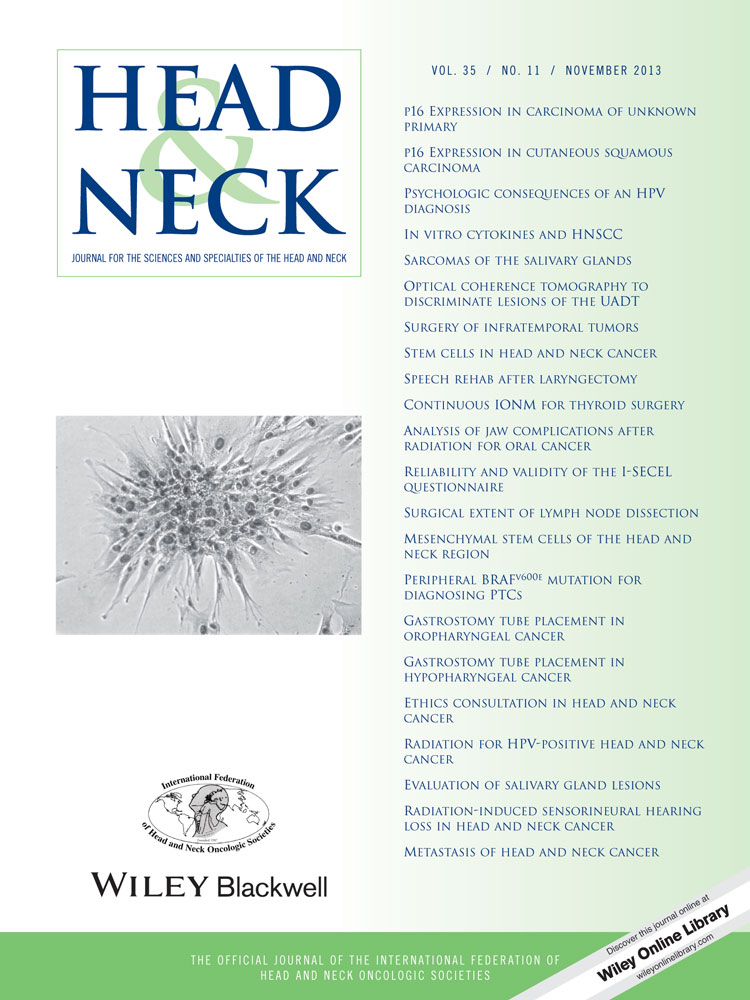Gastrostomy tube placement in patients with hypopharyngeal cancer treated with radiotherapy or chemoradiotherapy: Factors affecting placement and dependence
Ehab Y. Hanna, MD, was recused from consideration of this manuscript.
This work was presented at the Dysphagia Research Society Meeting, San Antonio, Texas, February 2011.
Abstract
Background
Placement of gastrostomy tubes (g-tubes) in patients with hypopharyngeal cancers undergoing radiation and chemotherapy is generally empirically determined. We examined our experience to identify predictive factors for g-tube placement and length of dependence.
Methods
We performed a retrospective review of all patients with primary hypopharyngeal cancer treated with nonsurgical modalities at a tertiary care center between 2002 and 2008. Rates of g-tube placement and length of dependence on enteral feedings were analyzed in relationship to multiple risk factors.
Results
Forty-three patients with hypopharyngeal primary tumors (77%) who had a complete response at the primary site after treatment were included. Thirteen patients (30%) never required g-tube placement. At 1-year follow-up, 11 patients (28%) maintained a g-tube. No clinical variables were significantly associated with g-tube placement. Duration of g-tube dependence was significantly longer in patients with a posterior hypopharyngeal wall primary tumors (p = .026), current smokers (p = .001), and patients with >40 pack-years (p = .010). The duration of g-tube dependence was significantly shorter in those who maintained oral intake at the end of treatment (p = .05), and those who reported adherence to dysphagia exercise regimens (p = .048).
Conclusion
Approximately one third of patients with hypopharyngeal tumors treated on organ preservation regimens may be able to avoid g-tube placement, but further research is needed to identify clinical factors that predict g-tube placement in this population. A posterior hypopharyngeal wall primary and smoking history correlated with longer gastrostomy tube dependence. Adherence to aggressive targeted swallowing exercise regimens may help to prevent long-term dependence on feeding tubes. © 2013 Wiley Periodicals, Inc. Head Neck, 35: 1641–1646, 2013




